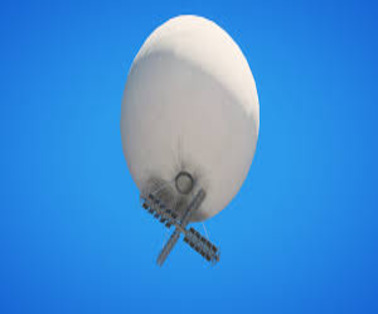The Chinese spy balloon, roughly the size of three buses, spotted off the coast of South Carolina in the United States has heightened tensions between Washington and Beijing. After much planning, the balloon was shot down over US territorial waters.
Key Points On Spy Balloon
- Beijing has responded, calling the object “a civilian airship used for meteorological research”.
- Beijing, however, has dismissed Washington’s accusationsof surveillance and international airspace violation as an attempt to “attack and smear China.”
- A spy balloon is typically a piece of spying equipment for instance camera attached beneath a balloon flying in space under the influence of wind currents
- The equipment attached to such balloons may be powered by radar or solar energy.
- Spy balloons can fly at 24,000 metres – 37,000 metres. This height is above commercial air traffic as airlines never fly higher than 12,000 metres
What Is Spy Balloon?
- A contemporary spy balloon is a piece of spying equipment, for example a camera, suspended beneath a balloon that floats above a given area, carried by wind currents.
- Balloons are one of the oldest forms of surveillance technology. The Japanese military used them to launch incendiary bombs in the US during World War Two.
- They were also widely used by the US and the Soviet Union during the Cold War.
- Modern balloons typically hover between 24km-37km above the earth’s surface (80,000ft-120,000ft).
History Of Spy Balloon
- Around a decade-and-a-half after the first ever hot air balloon took flight with humans, balloons were already being used for military purposes.
- During the French Revolutionary Wars in the late 18th century, balloons were used to provide a bird’s eye view of the battlefield, with there being documented evidence of their use in the Battle of Fleurus in 1794.
- Since then, balloons have been in use in all kinds of conflict, from the American Civil War to World War I.
- For well over a century, before aircraft technology really took off during the Great War, balloons were the primary mode of big-picture reconnaissance
- During World War II, as technologies evolved and balloons could be pushed to higher altitudes, their use evolved as well.
- After the war, the US military started exploring the use of high-altitude spy balloons, which led to a large-scale series of missions called Project Genet.
- The project flew photographic balloons over Soviet bloc territory in the 1950s – a time before the sheer ubiquitousness of surveillance satellites we see today.
Significance Of Spy Balloon
- Unlike satellites which can cost millions of dollars to create, and require sophisticated technology to launch, high-altitude balloons are cheap and easy to launch and control.
- While balloons cannot directly be steered, they can be roughly guided to a target area by changing altitudes to catch different wind currents.
- Moreover, unlike satellites which are at much higher altitudes and moving at incredible speeds, spy balloons have the advantage of being able to hover around at lower heights, thus providing better quality images as well as more time to gather intelligence in a particular area.
Tensions Between the US, China
- The relationship between the US and China have been tense in recent times
- Issues ranging from Taiwan and the South China Sea, to human rights in China’s western Xinjiang region and the clampdown on democracy activists in Hong Kong.
- Taiwan specifically has been at the centre of US- China animosity, ever since former House Speaker Nancy Pelosi visited the island nationclaimed by China as its own.
Air Sovereignty

To Download Monthly Current Affairs PDF Click here
Click here to get a free demo
Everything About CLAT 2025



